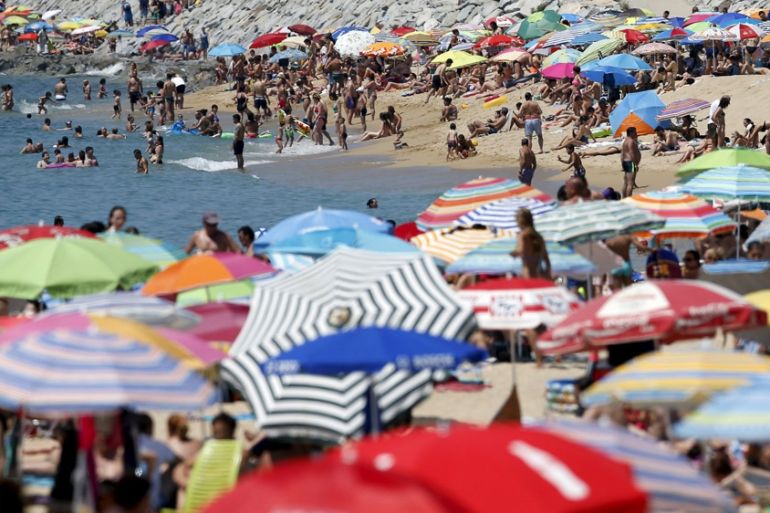Records broken as heatwave hits US northwest
Record-breaking and deadly stretches of heat are being recorded across the world, and more are developing.

British Columbia has become the first Canadian province to creep past the 40C mark this year, in Osoyoos and Warfield. Banff in Alberta set a new June record of 31.9C, exceeding the 2006 figure by two degrees.
Both India and Pakistan have had heatwaves this year, Western Europe is developing one and North America is enduring one, in its northwest. The precise definition differs from country to country but the effects are the same.
Keep reading
list of 4 itemsBrazil’s army is rescuing people stranded by deadly flooding
Photos: Death toll rises to 78 amid Brazilian storms and floods
At least 75 killed, more than 100 others missing in Brazil floods
South of the Canadian border, in the US, Oregon and Washington and their neighbour, Idaho, have been reaching or breaking temperature records. Lewiston, Idaho beat its 79-year-old record and hit 44C. Boise was just one degree off beating its all time record.
Pendleton, Oregon set a new high of 43C, the highest June temperature since records began, in 1893. Spokane, Washington has been keeping its archive since 1881 and this weekend the city broke the June temperature record by more than 2C.
The state of Montana joined in with record smashing; Meacham beat its 54-year-old record by 4C, at 38C. Missoula now has a new June record of 39C and it has been formally recording temperatures since 1893.
Europe’s heat
Meanwhile, a developing Spanish heatwave was shown by Sunday’s high of 43.7C in Cordoba, in the country’s southwest. Seville measured 42.6C and Murcia over 41C. Over the coming days a significant rise in temperatures is forecast in Western Europe. With Paris expecting 37C and London expected to see 32C.
However a heatwave is defined, the effects are common to all. The power infrastructure is strained, sometimes beyond its limit; nature is stressed, sometimes beyond its limit and, often, people die.
But questions have been asked as to why such sustained hot spells seem to be occurring this year, across a number of continents.
There are contributing factors – oceans absorb atmospheric heat and sea surface temperatures are rising. They are above long term averages in many places, for example, the Arabian Sea, Gulf of Mexico and the Mediterranean Sea.
It is also a year of El Nino, where ocean warmth is moved out of its normal position. The world’s water contains and transports most globally stored heat, and if it is warm around a country’s coastline, that provides the impetus for a heatwave.
Recent research papers have confirmed the suspicion that climate change is likely to lead to more heatwaves. This may seem obvious, but a proper examination of the evidence gives a good basis for national planning.